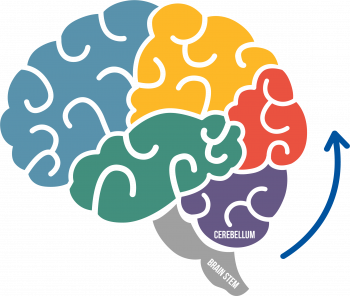
Everyone gets stressed out. Kids and adults alike can have trouble regulating their emotions when they are in an overwhelming environment. This is called dysregulation, which happens when the body's threat response is triggered. Sensory interventions can help!
Sensory Interventions
When you're feeling stressed or overwhelmed, your body goes into a threat response mode, where you feel like you can't control your emotions or process your thoughts. This is where sensory interventions come in. A sensory intervention is something you can use to distract yourself from a stressor. It could be something you touch, hear, see, smell, or even taste. Sensory interventions help bring you back to a calm state where you can regulate your thoughts and feelings.
Stressors, or triggers, can be anything that make you feel restless, anxious, overwhelmed, easily distracted, or disconnected from your body.
Oversensitivity is a common stressor for people with sensory issues. If you are oversensitive, you might be especially bothered by things like bright lights, loud noises, or crowds. Unregulated oversensitivity can lead to increased anxiety and restlessness.
On the other hand, undersensitivity can also affect people. Being undersensitive means you need to stimulate your senses in order to regulate your emotions and process your thoughts. Maybe you need some kind of sound on in the background to focus on tasks, or you always need to be fidgeting with something. If you don't give yourself the stimulus you need, issues can build up over time. That can lead to difficulty recognizing signs of fear, frustration, and sadness.
How Sensory Interventions Work

Sensory therapy offers simple strategies for grounding that activate a calming response in your body. The best thing about sensory therapy is that the strategies are personalized to each individual. These strategies alleviate stress, anxiety, and emotional dysregulation.
Sensory approaches organize and regulate the intensity of sensory inputs. This is done by starting the work at the lower levels of the brain stem, limbic system, and cerebellum. When a person is emotionally overwhelmed, they cannot engage the higher levels of their brain, which are responsible for reasoning and planning. So, sensory approaches target the lower brain and work upward. Sensory stimulation engages the lower areas of the brain first. This is why sensory interventions are effective in regulating emotional distress.
Examples of Sensory Interventions
People experience sensations differently. Sensory inputs are recognized, processed, and responded to in different ways from person to person. Some people experience sensations very intensely, while others may not notice the same stimulation. That's why people have different sensory likes, dislikes, and preferences. Keep that in mind when choosing your own sensory interventions.
Here are examples of sensory interventions that might help regulate emotions based on which sense feels best:
Touch |
Sight |
Sound |
Scent |
Taste |
|
Splash cold water on your face Pet an animal Wrap up in a soft blanket |
Watch water (skip rocks to make ripples) Lava lamps Nature scenes |
Listen to music Nature sounds ASMR videos |
Light a candle Collect and smell flowers Diffuse essential oils |
Chew gum Suck on hard candy Crunch veggies (carrots, celery, etc.) |
Other examples of sensory interventions include proprioception and vestibular/movement. Proprioception refers to the awareness of the body in space. It can be stimulated with the use of yoga, stretching, and weighted blankets or objects. Vestibular refers to the sensation of moving. Stimulate this sense by walking, rocking, swinging, dancing, and any other type of movement.
No matter which sense you like to stimulate, sensory interventions are a great way to calm your body and mind. When you feel stressed or overwhelmed, these practices can bring you back to a calm state. Remember to personalize your sensory approaches. Reach out to a provider for help with individualizing sensory interventions.
Meet the Author: Taylor Anderson

Taylor Anderson, MS, LAPC, is an outpatient therapist at The Village's Bismarck office. Taylor has a deep passion for serving individuals with disabilities and those who have endured any and all facets of trauma. Her counseling style meets individuals where they are at. She works alongside clients to support them in achieving their personal goals. Taylor's therapeutic approach primarily consists of evidence-based practice models, cognitive behavioral therapy, trauma-informed prevention/intervention, and person-centered therapy.




